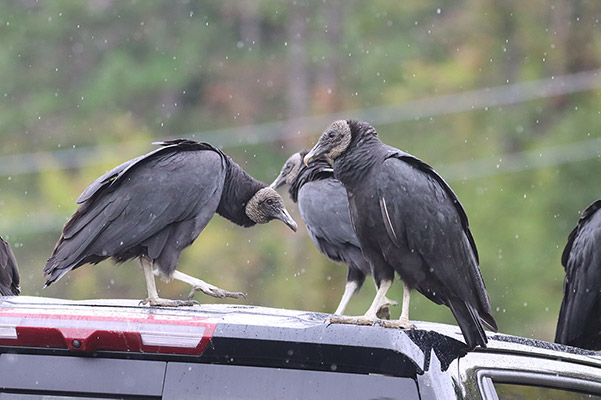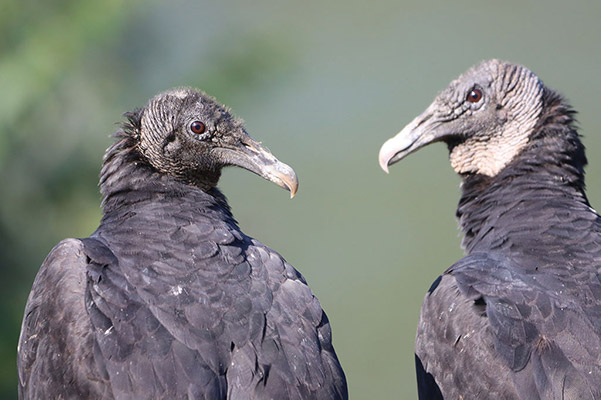As summer turns to autumn, many people start looking forward to cooler temperatures, and more importantly to Halloween. Black Vultures are one of those species that looks like it’s ready for Halloween year-round. And just like the little monsters that ring our doorbells on Trick-or-Treat night there is more than meets the eye to the these scary-looking birds.
Black Vultures are smaller than the more familiar Turkey Vultures, and their sense of smell is less developed than that of Turkey Vultures. They rely on their vision to spot Turkey Vultures circling a dead animal and will follow the Turkey Vultures to carrion.

Black Vultures are also very family-oriented. Adults are monogamous and will pair-bond for much of their lives. They stick together throughout the year, and will care for their young long after the young have learned to fly on their own. They form kin groups that roost communally in the evenings. These kin groups of closely-related individuals look out for one another, much like many human families.
One aspect of the kin group that I think many kids can relate to on Trick-or-Treat night is that if a few members of the kin group are unsuccessful at finding food, other members will lead them to food. This is not unlike when kids go Trick-or-Treating and tell each other where the houses with the best candy bars are.

A little knowledge and understanding can go a long way from seeing a scary bird of death to a relatable, intelligent, funny, caring bird that is often misunderstood because of its appearance. Once you get to know them you can’t help but appreciate them and find a soft spot in your heart for them.

